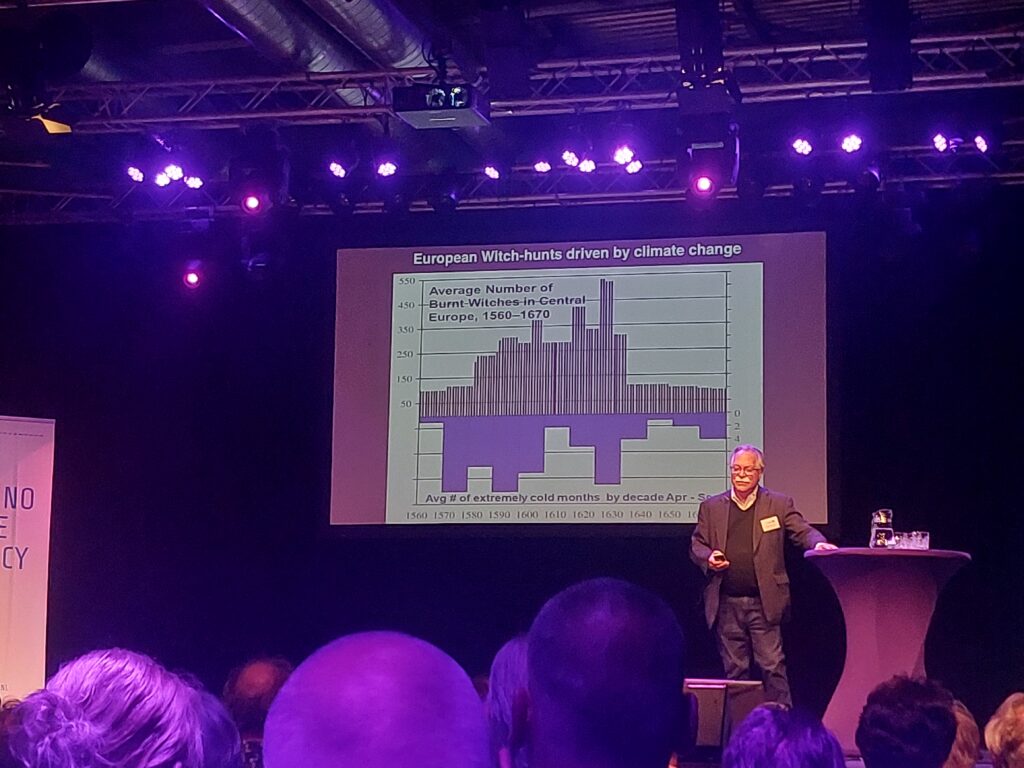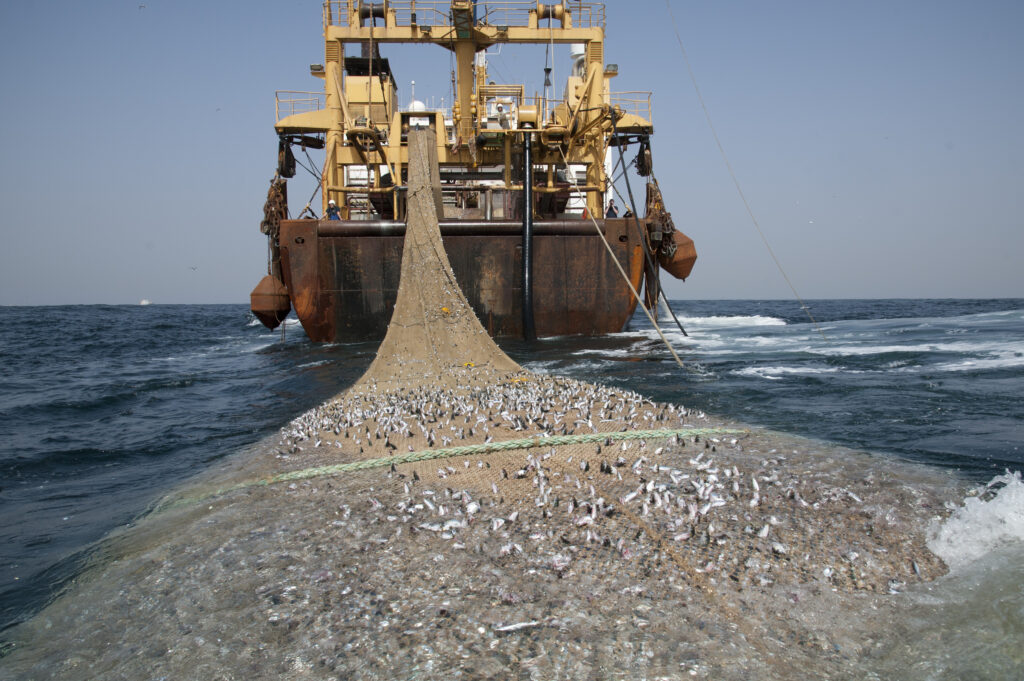As the recent natural gas industry attacks on the Oscar-nominated documentary Gasland demonstrate, the gas industry is mounting a powerful PR assault against journalists, academics and anyone else who speaks out against the dangers of hydraulic fracturing and other threats to public health and the environment from shale gas development. DeSmogBlog has analyzed some of the common talking points the industry and gas proponents use to try to convince the public and lawmakers that fracking is safe despite real concerns raised by residents living near gas drilling sites, whose experiences reveal a much more controversial situation.
DeSmogBlog extensively reviewed government, academic, industry and public health reports and interviewed the leading hydraulic fracturing experts who challenge the industry claims that hydraulic fracturing does not contaminate drinking water, that the industrial fracking fluids pose no human health risk, that states adequately regulate the industry and that natural gas has a lighter carbon footprint than other fossil fuels like oil and coal.
Below are ten of the most commonly repeated claims by the industry about the ‘safety’ of hydraulic fracturing and unconventional natural gas development, along with extensive evidence showing their claims are pure rhetoric, and not reality.
Natural Gas Rhetoric Vs. Reality
1. RHETORIC: There has never been a proven instance of drinking water contamination caused by hydraulic fracturing.
REALITY: This statement, repeatedly used by industry and pro-drilling groups, is highly misleading.
There is no doubt that water contamination has resulted from natural gas drilling practices. The actual cause of contamination can vary from case to case, and it is often difficult to conclusively determine the exact cause. Therefore, no natural gas drilling practice, including hydraulic fracturing, can be ruled out categorically.
This is an example of a typical PR trick, where industry uses highly specific language to deliberately mislead the public and to discredit the citizens whose drinking water has been ruined by contamination.
By crafting its argument around hydraulic fracturing specifically and not natural gas drilling more generally, industry is hiding behind technicalities to obscure its documented role in contaminating drinking water supplies. It is referring only to a precise moment that occurs within a much larger industrial process.
Attributing groundwater contamination to the specific moment of hydraulic fracture is difficult to conclusively ‘prove’ because the process occurs thousands of feet underground, where it is difficult to track the exact migration of the chemicals and gasses involved.
The Houston Chronicle has noted industry’s use of this tactic, reporting that, “industry officials say few such incidents have been tied conclusively to hydraulic fracturing and that they are more likely isolated accidents involving other parts of drilling operations.” [emphasis added]
In fact, natural gas operations, especially hydraulic fracturing projects in unconventional gas deposits, have been linked to numerous instances of water contamination. For example, the Colorado Oil and Gas Conservation Commission confirmed that natural gas drilling directly caused the methane contamination of drinking water in Colorado, but could not definitively confirm the contamination was the direct result of hydraulic fracturing.
There are numerous aspects of drilling which may contribute to drinking water contamination, including spills, accidents, well blowouts, faulty cement jobs, and the improper transport, processing and storage of wastewater and drilling muds. Hydraulic fracturing in unconventional gas deposits requires vast amounts of water, and entails intensive drilling methods, and high-pressure injections – risky processes that increase the probability of accidents that could affect water supplies.
For numerous examples of water contamination related to natural gas drilling see reports from the Environmental Protection Agency, the Pennsylvania Department of Environmental Protection, the Natural Resources Defense Council, the Environmental Working Group, ProPublica, Earthworks Oil and Gas Accountability Project, the Arkansas Public Policy Panel, and the New York Riverkeeper.
2. RHETORIC: Hydraulic fracturing is a proven method successfully applied in millions of gas wells for over 60 years.
REALITY: Again, this assertion leaves a false impression that industry has used the same fracking technique for six decades, when in fact the current hydraulic fracturing practices used in unconventional gas recovery have evolved greatly from the original methods employed 60 years ago. The reality is that the industry has less than ten years’ experience with high-volume slick water hydraulic fracturing.
According to recent testimony by Dr. Anthony Ingraffea, a hydraulic fracturing expert from Cornell University, the current fracturing technology is “surprisingly, relatively new. There are four elements of that new technology, and they did not come together in the United States until about eight years ago. So this is not the hydraulic fracturing of the 1950s, 1960s, and 1970s. It’s not conventional gas development of that era. It’s a relatively new combined technology. … When industry says that they’ve had vast experience, 60 years of experience, with hydraulic fracturing, what they fail to say is that they’ve had fewer than 10 years of experience on a large scale using these unconventional methods to develop gas from shale.” [emphasis added]
The scope and scale of modern hydraulic fracturing operations in unconventional plays are much greater than the way the technology was used decades ago.
These drastic differences include:
• Significantly higher amounts of water (and water pressure) used in each fracture, up to 7.8 million gallons per well. This represents 50 to 100 times the amount needed in conventional gas wells. Each well is capable of being fractured multiple times, in some cases, as many as 20 times. Post extraction procedures, such as refining and transport, can use an additional 400 million gallons of water each day.
• Horizontal drilling is employed in about 90% of unconventional gas wells in the U.S. Horizontal drilling techniques allow lateral access to deposits thousands of feet underground. This recent technological advancement is what has made harvesting unconventional deposits profitable, and accounts for the increase in drilling pressure, up to 13,500 psi.
• The chemical components of fracturing fluids are constantly evolving and research has shown a number of them to be extremely toxic to human and environmental health. Given the high volumes of water necessary for each fracture job, enormous amounts of chemicals are required, up to 20 tons per 1 million gallons of water used.
3. RHETORIC: The water contamination featured in Gasland and investigated by journalists from ProPublica are instances of preexisting methane contamination from other sources. Hydraulic fracturing for natural gas occurs thousands of feet below water bearing aquifers and could not possibly be their source of contamination.
REALITY: The natural gas industry commonly raises this point to delegitimize concerns of water contamination due to drilling operations. Without baseline testing prior to the commencement of drilling – a critical protection not yet mandatory in any state – industry can continue to claim that contaminants subsequently identified in nearby water wells are “naturally occurring.”
Drilling operations can enable methane to contaminate water through “disturbances of previously blocked migration paths through joint sets or faults, or by puncturing pressurized biogenic gas pockets and allowing migration through an as-yet un-cemented annulus, or through a faulty cement job.” Faulty cement jobs can allow natural gas, fracturing fluids and contaminated flowback water to travel alongside the wellbore to nearby drinking water aquifers.
EPA scientists confirmed methane and other contaminants were responsible in a Fort Worth, Texas water contamination incident linked to gas drilling operations. Based on contamination incidents in Garfield County, a report by hydrogeologist Geoffrey Thyne gives an account of how methane migration can and has occurred.
The presence of methane in drinking water is a serious danger. Methane will evaporate quickly from drinking water and is explosive when trapped in confined structures such as homes. Immediate effects of inhalation are dizziness and headaches. At high enough levels methane can act as an asphyxiant causing suffocation by displacing available oxygen. Instances of oxygen depravity can lead to hypoxia, where there is a lack of oxygen to sustain life, and can lead to nausea, brain damage and eventually death.
The presence of methane does not account for the issue of toxic chemicals from fracturing fluids in drinking water. Baseline testing, which is not yet mandatory in any state, would establish the quality of drinking water before drilling and would prevent operators from falsely claiming that ‘contamination occurred prior to drilling’ in instances where that is not the case.
4. RHETORIC: The natural gas industry and its use of hydraulic fracturing are – and have always been – “aggressively regulated” by the states.
REALITY: State public health and safety agencies have failed to keep pace with the industry’s aggressive experimentation with new drilling technologies and the rapid expansion of unconventional gas development.
Existing standards and protections for public health and the environment vary widely from state to state, and have not been reconciled with the rapidly evolving technology. According to Earthworks, reporting requirements are often scant in gas producing states, and companies do not have to report detailed information on drilling chemicals, the amount of fluids remaining in the ground after injection, or whether fractures remain within targeted areas. In some states, companies do not have to monitor water quality when drilling near sources of drinking water.
An Environmental Working Group report describes state officials as largely ‘oblivious’ to what companies are injecting into the ground during hydraulic fracturing operations and at times appearing to misinterpret the Safe Drinking Water Act, particularly concerning the use of diesel.
In fact, a recent congressional investigation into the illegal use of diesel in hydraulic fracturing operations found that state agencies had little knowledge that companies were using diesel without permits (and in violation of the Safe Drinking Water Act). Between 2005 and 2009, over 32 million gallons of diesel and fracturing fluids containing diesel were used illegally in hydraulic fracturing operations, according to the investigation.
In 2010, the State Review of Oil and Natural Gas Environmental Regulations (STRONGER) demonstrated that:
• baseline testing is not always mandatory prior to drilling activities;
• cement job logs are not always maintained by operators;
• potential underground migration pathways which could act as a conduit for fluid migration into groundwater, such as abandoned wells, do not have to be identified before drilling in all states;
• the depth of surface casings when drilling near groundwater do not have to be included in drilling permit applications to ensure groundwater protection;
• not all states have adequately addressed how information on fracturing chemicals will be made available to medical responders in the event of an emergency;
• not all operators are required to notify state officials when drilling operations will commence;
• waste storage and pits do not always undergo inspection or certification.
EPA investigations have faulted state officials for inadequate response to concerns over drinking water contamination due to gas drilling. Public health and safety protections, whether state or federal, are only truly effective with comprehensive monitoring and enforcement before, during, and after drilling operations.
The Council of Scientific Society Presidents has also warned that natural gas derived from hydrofracking shales is “another area where policy has preceeded adequate scientific study.”
A geological engineering expert interviewed by DeSmogBlog cautioned that “it is important to make sure that regulatory agencies can do their jobs independently and are not ‘captured’ by industry or placed under undue political pressure by our elected representatives.”
5. RHETORIC: Hydraulic fracturing has not been made exempt from the Safe Drinking Water Act because it was never regulated under it in the first place.
REALITY: Energy In Depth’s suggestion that hydraulic fracturing has not been made exempt from the Safe Drinking Water Act is erroneous. The exemption of hydraulic fracturing from EPA authority via the “Halliburton Loophole” in the 2005 energy bill is well documented.
The Safe Drinking Water Act has always covered the “subsurface emplacement of fluid” within the Underground Injection Control (UIC) program in order to protect underground sources of drinking water (USDWs). UIC included the processes associated with hydraulic fracturing until language was inserted into the 2005 Energy Policy Act in order to alter the definition of underground injection to mean “the subsurface emplacement of fluids by well injection” but to exclude “the underground injection of fluids or propping agents (other than diesel fuels) pursuant to hydraulic fracturing operations related to oil, gas, or geothermal production activities.”
The Center for American Progress released a report in 2004 accusing the Bush Administration of “altering scientific information to advance an oil and gas development practice known as ‘hydraulic fracturing.’” The report, entitled “Special Interest Takeover: The Bush Administration and the Dismantling of Public Safeguards,” details how in 2002 the EPA briefed congressional staff about the dangers of hydraulic fracturing, especially concerning benzene contamination in drinking water. The EPA, however, soon revised their position, saying fracturing would not contaminate drinking water with levels of benzene above federal standards. EPA claimed the change in position was due to information from an ‘industry source.’ As a result, Cheney’s Energy Task Force removed any mention of these concerns from its energy plan.
The oil and gas industry also enjoys numerous other exemptions from federal oversight including the Clean Water Act, the Clean Air Act, the Comprehensive Environmental Response, Compensation, and Liability Act (CERCLA or Superfund Act), the Resource Conservation and Recovery Act, the Toxic Release Inventory and the National Environmental Policy Act.
6. RHETORIC: The chemicals used in the fracturing process are as common as household cleaning products, cosmetics and processed food ingredients. Companies are voluntarily reporting fracturing chemicals on their websites so the legal disclosure required by the FRAC Act is unnecessary.
REALITY: While natural gas companies have begun to ‘voluntarily’ report some chemicals used in fracturing on their websites, there is a lack of complete disclosure, which leaves the public and health officials in the dark about the potential health risks involved.
These website “fact sheets” do not reveal all of the chemicals used in the fracturing process, nor do they include Chemical Abstracts Service (CAS) identifier numbers which are necessary to identify the toxicity of each chemical component.
Industry only “volunteered” the partial information in an effort to deter the legally binding disclosure proposed in the Fracturing Responsibility and Awareness of Chemicals Act (FRAC Act), a measure introduced in 2009 that stalled in congressional committee after intense industry lobbying.
The lack of information regarding the chemicals used in the drilling process seriously inhibits the efficacy of contamination investigations because investigators do not know what to test for. In addition, these “fact sheets” often present the few disclosed chemicals in misleading ways, suggesting them as harmless household products, or even as ice cream ingredients.
Some of the chemicals used in the hydraulic fracturing process are known to cause cancer and organ damage, and to be disruptive to reproductive, neurological and endocrine systems.
A recent investigation revealed the unpermitted injection of more than 32 million gallons of diesel for hydraulic fracturing by numerous natural gas operators between 2004 and 2009. The use of diesel, which contains benzene (a known carcinogen), in hydraulic fracturing is illegal and in direct violation of the Safe Drinking Water Act. A report by the Environmental Working Group identifies other unregulated petroleum distillates used in hydraulic fracturing which resemble diesel that were found to have 93 times more benzene than diesel.
7. RHETORIC: The majority of fracture fluids remain underground in the hydraulic fracturing process.
REALITY: Again, this is industry “spin” that fails to account for widespread uncertainty about the true fate of these industrial fluids.
According to Dr. Anthony Ingraffea, “The industry is fond of saying that most of what they pump down stays down. What they fail to talk about is the timeframe in which they’re counting. Typically, the returned fluid, after the fracturing process, is counted as returned fracturing fluid only during about the first week or two of flowback operations. However, all shale gas wells continue to produce fracturing fluid and brine containing heavy metals for the entire life of the well. One has to be very careful. One cannot say that on average, 50% of the fluid comes back. One has to say under what timeframe one is making that measurement. Typically, almost all of the fracturing fluid comes back during the life of the well.”
The returned fluid, once resurfaced, poses unique risks: “once the fluid comes back…it contains not only the chemicals that were put in on the way down but the material that was picked up from the shale…notably, in black shales, shales containing gas, the most dangerous of those are the heavy metals – strontium, barium, uranium, and radium – some of which are also naturally occurring radioactive materials.”
Dr. Theo Colborn of The Endocrine Disruption Exchange (TEDX) reports that once drilling is complete, produced water continues to surface for the life of the well for 20 to 30 years.
A 2009 Department of Energy report suggested that between 30 and 70 percent of fracking fluids remain underground, however the DOE noted the uncertainty of determining the exact fate of the fluids: “it is not possible to unequivocally state that 100% of the fracturing fluids have been recovered or to differentiate flow back water from natural formation water.”
8. RHETORIC: In 2004 the EPA’s study on hydraulic fracturing concluded that the process posed no real threat to drinking water. The current EPA studies, the first regarding human health and drinking water due in 2012 and the second considering the lifecycle of natural gas drilling operations due in 2014, are redundant.
REALITY: The 2004 EPA study has been widely discredited by scientists and independent experts (and EPA’s own scientists) for failing to test water in contaminated areas. The study’s objectivity was compromised by direct industry pressure throughout the course of the study, presenting a clear conflict of interest.
In 2000, the EPA began a study to determine the risks posed to drinking water by hydraulic fracturing. This controversial study, completed in 2004, concluded that hydraulic fracturing in coalbed methane “poses little or no threat to drinking water.” This study was largely used to justify the “Halliburton Loophole” exemption and is still currently cited by the gas industry to assert the safety of hydraulic fracturing and to deny allegations of water contamination.
The study has since been discredited after widespread criticism from independent exerts, as well as internal criticism among EPA scientists who noted the faulty study neglected to test water samples in contaminated areas. Both EPA and independent experts noted the study was compromised due to the involvement of industry groups who were consulted throughout the process, posing a clear conflict of interest.
The study was also extremely limited in scope, focusing solely on coalbed methane fracturing and the potential for the underground migration of chemicals through rock layers. After the report was released, EPA scientist Weston Wilson cautioned Colorado representatives that “based on available science and literature, EPA’s conclusions are unsupportable.”
In late 2009, the EPA was congressionally mandated to launch a new investigation into hydraulic fracturing. In March 2010, the EPA announced that the report was to address more extensively the threats posed by hydraulic fracturing to drinking water and human health.
In June 2010, the EPA Science Advisory Board endorsed additional research into the lifecycle of hydraulic fracturing and the potential impacts on drinking water. This study will include a focused review of the potential impacts on drinking water, ten in-depth case studies conducted across the U.S., and will include stakeholder participation throughout the research. The proposed research includes an increased scope of study including water acquisition, frac fluid mixing, hydraulic fracturing, post-fracturing, and flowback and wastewater management. The initial results of the study are due in 2012 and the full report is due in 2014.
9. RHETORIC: Natural gas has a lighter carbon footprint than other fossil fuels such as oil or coal.
REALITY: Although gas burns cleaner than coal and oil, the extraction, the processing and transport of natural gas emit large amounts of methane, a potent greenhouse gas (GHG). Methane has a global warming potential 21 times greater than carbon dioxide on a 100-year scale, and 72 times greater than carbon dioxide on a 20-year scale. A recent, ongoing Cornell analysis suggests the footprint of shale gas may be 1.2 to 2.1-fold greater than coal’s on a 20-year timeframe.
Recently the EPA drastically increased estimates of methane leakage from the natural gas industry. The revised figures estimate emissions from unconventional natural gas operations at 9,000 times higher than previous estimates. Yet, due to inadequate data regarding unconventional natural gas extraction from resources such as shale gas, the EPA maintains that these revised figures likely underestimate the total amounts.
Professor Robert Howarth and colleagues from Cornell University, using EPA estimates of methane leakage from natural gas operations, puts natural gas ahead of coal in terms of GHG emissions. The EPA recently estimated that fugitive methane from the petroleum and natural gas sector equals the annual equivalent of 40 million passenger cars.
10. RHETORIC: In some states like Pennsylvania, much of the wastewater from hydraulic fracturing is recycled. Where wastewater is not recycled, it is safely injected into underground wells.
REALITY: Wastewater recycling in the U.S. is still in its infancy, and has been plagued with problems. A Halliburton manager Ron Hyden put it succinctly in a newspaper interview: “We’re still in the infancy of trying to figure out how to recycle the water.”
Standards for “recycling” wastewater vary according to operations and in some states recycling is not practiced at all. Recycling of wastewater usually involves either the reuse of flowback water for additional hydraulic fracturing operations, or treatment where water is separated from contaminants. In the latter case, the remainder is a highly concentrated mixture of hazardous chemicals, salts and in some cases, radioactive materials, which must be disposed of properly.
The reuse of flowback water in hydraulic fracturing operations poses a threat to underground sources of drinking water, in much the same way that injection of waste fluids in disposal wells poses such a threat and is therefore regulated by EPA under the Safe Drinking Water Act (UIC program). In Ohio, for example, wastewater cannot be reinjected for use in hydraulic fracturing due to water contamination concerns.
There are public health concerns that disposal by means of underground injection will result in “creating yet another potential source of extremely toxic chemical contamination.” Some states require companies to demonstrate that the disposal injection will not escape target zones or contaminate fresh water aquifers (e.g. New York).
A recent report by the Arkansas Public Policy Panel notes that the underground injection of waste can threaten drinking water sources through:
• the injection of waste above aquifers;
• leakage between unconfined beds;
• leakage due to hydraulic fracturing or faults;
• upward migration of waste along well casings;
• migration due to cement failures;
• migration through preexisting pathways such as abandoned wells;
• migration due to injection pressures or geologic shifts.
Geologists suspect that a recent scourge of earthquakes in Guy, Arkansas may be connected to underground injection of fracking wastewater for disposal.
–
Additional research and reporting by DeSmogBlog contributors Carol Linnitt and Emma Pullman.
Stay tuned for more of DeSmogBlog’s research on fracking and gas industry distortions.
Subscribe to our newsletter
Stay up to date with DeSmog news and alerts






